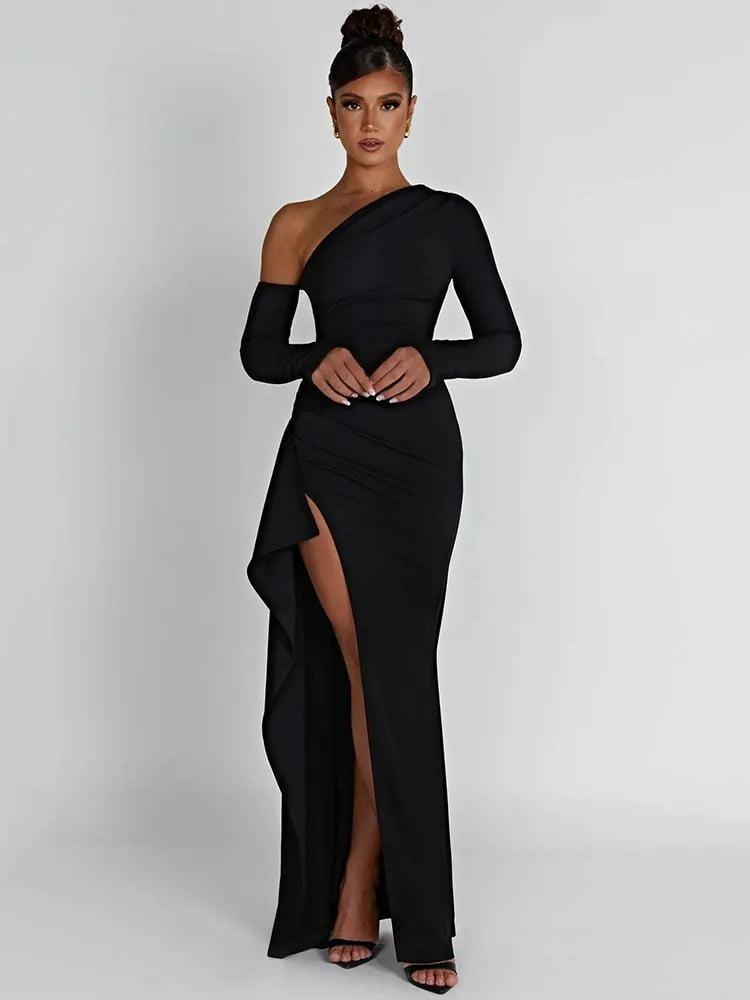How to Measure a Dress for the Perfect Fit
Finding a dress that fits just right can sometimes feel like a challenge. Whether you’re shopping online or tailoring a dress for an event, knowing how to measure a dress is essential to achieving the perfect fit. Accurate measurements ensure that your dress complements your body shape, offers maximum comfort, and highlights your best features. In this guide, we’ll walk you through every step of measuring a dress—from bust to hem—while answering important questions like “Do you double flat measurements?” and “How do you measure and hem a dress?”. With these tips, you’ll never have to worry about sizing mishaps again!
On This Page
The Basics of Measuring a Dress for the Perfect Fit
Why Measuring Your Dress is Important
Getting your dress measurements right is crucial for ensuring a flattering and comfortable fit. Inaccurate measurements can result in a dress that’s too tight, too loose, or awkwardly proportioned. Whether you’re measuring yourself for a custom dress, altering a dress at home, or buying online, precise measurements are key to looking and feeling your best. Additionally, double-checking your measurements will help avoid costly mistakes, especially when shopping online where returning ill-fitting clothes can be a hassle.
Do You Double Flat Measurements?
This is one of the most common questions when measuring a dress. Flat measurements are taken when the garment is laid flat on a surface, like a table or floor. You measure across one side of the garment, then double the flat measurement to account for both sides. For example, if you’re measuring a dress’s bust and the flat measurement is 17 inches, the actual bust measurement would be 34 inches. Doubling these measurements gives you a more accurate understanding of how the dress will fit when worn.
How to Measure Yourself for a Dress: Step-by-Step Guide
What You’ll Need: Tools for Accurate Measurements
Before you start, gather all the necessary tools. You’ll need a flexible measuring tape, a mirror (or a friend to help), a pen, and paper to jot down your measurements. For some steps, you may also need pins or chalk to mark the dress, especially if you’re hemming it yourself. Wearing the right undergarments is essential, as they can affect how the dress fits your body.
How to Measure Bust for a Dress: Bust Measurement Tips
Measuring your bust correctly is one of the most important steps to ensure your dress fits properly. Stand straight and wear a well-fitting bra. Place the measuring tape around the fullest part of your bust, making sure the tape is level across your back. The key here is to not pull the tape too tightly, as this can distort the actual size. This measurement determines how snug or loose the dress will be across your chest.
Do You Double Bust Measurement?
When measuring a flat bust on a garment, you should double the flat measurement, just like with flat measurements. However, when measuring on yourself, there is no need to double the bust measurement; the tape already accounts for your full bust size.
Measuring the Length of a Dress: Key Steps and Tips
How to Measure Dress Length Accurately
Knowing the proper dress length can make all the difference in how your outfit looks. To measure dress length, start at the highest point of the shoulder (where the shoulder seam meets the neckline) and measure down to the desired hemline. Be sure to stand tall and straight, as slouching or hunching can alter the length. This method works for most styles, from mini dresses to floor-length gowns.

Where Do You Hem a Dress Length?
The hemline of your dress should be carefully considered depending on the type of dress and the occasion. For a professional or casual look, a hem just above or below the knee works best, while a formal gown typically falls at or just above the floor. If the dress is too long, hemming can correct it, but knowing where to hem depends on the occasion and style.
How to Measure and Hem a Dress Like a Pro
How to Measure and Hem a Dress: Expert Instructions
Once you’ve determined the desired length of your dress, it’s time to hem it. Start by marking where you want the new hem to fall using chalk or pins. Measure from the existing hem to your mark and note the measurement to ensure consistency all the way around. Be sure to leave a little extra fabric for the hem fold, typically around 1 to 2 inches, depending on the fabric’s thickness.
How to Calculate Hem Length: A Simple Formula
To calculate the hem length for your dress, you’ll need to measure from the current hem to the desired length, plus an additional 1-2 inches to account for folding. For instance, if you’re shortening a dress by 3 inches, you’ll need to mark 4-5 inches from the hemline (3 inches for the new length, plus 1-2 inches for the fold). This ensures a clean and professional-looking finish.

How to Mark a Hem by Yourself
If you’re working alone, marking the hem by yourself can be tricky but manageable. Wear the dress and stand in front of a full-length mirror. Use a piece of chalk or pins to mark the hem where you want it. An easier way is to use a ruler to measure up from the floor at consistent intervals, ensuring your hem is level all around.
How Do I Know My Hem Size?
Your ideal hem size largely depends on the style and cut of the dress. A cocktail dress might have a 1-2 inch hem, while a gown for a formal event might have a hem that just skims the floor. Generally, a longer dress has a smaller hem allowance, while shorter dresses have more flexibility. Here’s a quick guide:
| Dress Style | Ideal Hem Length (in inches) |
|---|---|
| Cocktail Dress | 1-2 inches above the knee |
| Floor-length Gown | Just above the floor |
| Midi Dress | Mid-calf |
Avoid Common Measuring Mistakes
Common Mistakes When Measuring Yourself for a Dress
There are a few common errors people make when measuring themselves for a dress. These include measuring while wearing bulky clothes, pulling the tape too tight, or not standing straight. For best results, take measurements in form-fitting clothes or the undergarments you plan to wear under the dress. Also, double-check your measurements to avoid any costly mistakes later.
| Bust Measurement (in inches) | Dress Size | Common Mistakes |
|---|---|---|
| 32-33 | Small | Measuring too tight |
| 34-35 | Medium | Including arms in measurement |
| 36-37 | Large | Not wearing the right bra |
How to Ensure Consistent Measurements Every Time
Consistency is key. Always measure yourself in front of a mirror or with the help of a friend. Make sure the tape measure is snug but not too tight, and take each measurement at least twice to ensure accuracy. When measuring bust, waist, and hips, the tape should be parallel to the floor.
How to Make Adjustments After Measuring: A Tailor’s Secrets
How to Adjust Dress Length Based on Measurements
If you find your dress is too long, adjusting the length is simple. Use the hem length formula mentioned earlier, mark your new hemline, and trim any excess fabric. Always allow a bit of extra fabric to fold and finish the hem neatly.
How to Calculate Hem Length for Different Body Types
Your body shape can influence how you adjust the hem of your dress. Taller individuals may want to add extra length to balance out proportions, while shorter individuals should be cautious about shortening dresses too much. As a rule of thumb, keep the hemline at a point where it visually elongates your legs, such as just above the knee or mid-calf.

Do You Double Flat Measurements for Every Dress Type?
While doubling flat measurements is important for most dresses, certain styles—like wrap dresses or stretchy fabrics—may not require it. If the dress fabric has considerable stretch, you can often rely on the single flat measurement. For non-stretch fabrics, doubling is a must to ensure the fit is accurate on both sides of the body.
Conclusion
Accurately measuring a dress is an essential skill for achieving the perfect fit. From bust to hem, taking careful measurements will help ensure your dress flatters your body shape and feels comfortable to wear. Remember to always double-check your flat measurements and take your time marking hemlines for a professional finish. With this guide, you’re now fully equipped to measure and hem any dress with confidence—no matter the style or occasion!
FAQs
Do you double flat measurements when measuring a dress?
Yes, flat measurements are taken from a laid-flat garment, and you should double them to account for both sides. For example, if the flat bust measurement is 17 inches, the full bust measurement would be 34 inches.
How do you measure bust size for a dress?
To measure your bust, wrap a measuring tape around the fullest part of your chest, keeping it level across your back. Ensure the tape isn’t too tight for an accurate measurement.
How do you measure and hem a dress?
First, decide on the desired length and mark it with chalk or pins. Measure from the original hem to the mark, leaving 1-2 inches for the fold. Cut any excess fabric, fold, and sew to complete the hem.
Where should the hem of a dress fall?
The ideal hemline depends on the style of the dress. For cocktail dresses, 1-2 inches above the knee works well, while floor-length gowns should skim just above the ground.
How do I know my hem size?
The hem size varies by dress type. A cocktail dress might have a 1-2 inch hem, while a longer gown may have a much smaller allowance. Generally, shorter dresses allow for larger hems than longer gowns.
Now that you know how to measure a dress perfectly, try it out and let us know how it goes!




